Insulation Tips
The Beginner’s Guide to Installing Ceiling Insulation
If you’re looking to improve the energy efficiency of your home, installing ceiling insulation is one of the best things you can do.
Many people choose to install ceiling batts themselves while others decide to hire a professional. Either way, if it’s your first time installing ceiling insulation there are a few things you should know before you get started.
Here’s our guide on how to install insulation in the ceiling the right way.
Installing Ceiling Insulation in New Homes vs Existing Homes
Unlike installing insulating in walls, the best time to install ceiling insulation is actually AFTER the plaster has been installed. It’s much easier to simply drop the batts into the space between the roof beams, atop the plaster board. However, it is a good idea to insulate the hard to reach areas before plaster—like the corners.
Check out our video on how to install ceiling insulation before plaster.
If the ceiling cavity is exposed, insulation batts can be pushed between the ceiling joists from below with a long stick. It’s important that you have the right sized batt so that it will fit snugly between the joists with no gaps.
If installing the batts from underneath is not ideal, you can install insulation from within the roof cavity. If the roof cavity is not accessible from a manhole, it can often be accessed from outside by removing some of the roofing material temporarily.
It’s a good idea to preload the ceiling with insulation before you start. Avoid installing during the hottest part of the day as the roof space can reach very high temperatures.
Check out our video on how to install ceiling insulation after plaster or in an existing home.
Should I Insulate the Ceiling Between Floors?
If you live in a double or multi storey home, it’s highly recommended to insulate the mid-floor area. Not only will this reduce heat flow and make heating and cooling more energy efficient, it’ll also help reduce noise transfer between floors.
Specialised acoustic insulation products are a great option for the mid-floor area. They’re thicker and more dense and will help absorb sounds from footsteps and appliances. This means more peace and quiet for the downstairs rooms.
Check out our video on why it is important to install insulation between floors.
Can You Install New Insulation Over Old Insulation?
Your current ceiling insulation might not be doing the best job at keeping your home at a comfortable temperature, but that doesn’t necessarily mean you have to throw all of it out and start again.
Old insulation may still have some insulating power which you can combine with your new insulation. The higher the R-Value you can achieve, the better.
Before installing your new ceiling insulation on top of the old, you should carry out a thorough inspection. If the old insulation is damaged, mouldy or infested, it should be completely removed before the new insulation is installed.
Not sure whether your insulation needs topping up? Check out our article How Long Does Insulation Last?
How Much Insulation Do I Need?
It’s important to know how much insulation you need before you start the installation process. Not having enough insulation can slow down the process while getting too much insulation can be a costly mistake.
The number of insulation bags required is easily calculated by dividing the number of square metres in the roof space by the number of square metres of insulation in the bags. We recommend deducting 10 percent off the total to allow for the timber framing itself.
Need help crunching the numbers? Try our Insulation Calculator.
Can I Install Ceiling Insulation Myself?
Many people decide to install their insulation themselves. With the right equipment and safe access to your ceiling cavity, choosing to DIY can help you save on installation costs.
However, it’s important to do your research beforehand to ensure a safe and effective installation. Poor installation – such as compressing the batts or leaving gaps between batts – can significantly reduce the effectiveness of the insulation.
Hiring a professional insulation installer can help you get the job done quicker and to a higher standard. Your installer can also recommend the best products based on your type of house and location.
How to Install Insulation in the Ceiling
The steps below explain how to install insulation in ceilings.
Your roof space may also require roof insulation under the roofing material. Find out more about how to retrofit roof insulation.
If you’re planning an attic conversion, check out our guide on how to install insulation in the attic instead.
Step 1. Get Prepared
Make sure you have the correct size, type and amount of insulation product for your DIY project.
Not sure how much insulation you need? Check out our home insulation calculator.
Step 2. Gather Your Tools
You will need a utility knife, safety glasses, dust mask, gloves and a long stick to help you get into hard to reach places. You might also want a kneeling board – it’s more comfortable than kneeling on rafters.
Step 3. Install the Batts
We recommend preloading the batts into the ceiling space before you start. This can help make the process quicker.
Start from the point furthest from the manhole and work your way backwards. Aim for a snug fit and an even height. You can trim the insulation to fit better as you work. Be sure to save the cut offs to fill in any gaps.
Step 4. Leave Clearances Around Downlights
Ensure you leave adequate space around ventilation, extractor fans, downlights and piping. You should put insulation under electrical cables where possible.
For more information about how to install insulation in the ceiling, visit our DIY insulation installation guide.
Safety Tips for Installing Ceiling Insulation
If you are planning to install ceiling insulation yourself, make sure you take all the necessary safety precautions. These include:
- Safety glasses – the ceiling cavity can be a very dusty place, especially in older homes. Safety glasses keep your eyes protected from any dust, dirt and other particles you might come across.
- Gloves – some insulation products can cause irritation to the skin so it’s best to wear gloves to protect your hands. Even if your insulation is itch-free (like polyester batts) gloves will help protect you from any dirt and rough surfaces in the roof cavity.
- Long sleeves – long sleeve shirt and pants is highly recommended if you will be handling glasswool products (also known as fiberglass insulation). Glasswool contains minute fibres that can cause irritation to the skin.
- Heat – if you will be installing insulation from the roof cavity, avoid doing so during hot weather as temperatures can soar inside the roof.
- Ventilation – make sure there is adequate ventilation in the roof cavity. If the roof is tiled, you can remove some tiles to let in more air while you work.
- Water – installing insulation can take a while. Ensure you have a bottle of water with you so you don’t have to go down to the house every time you need a drink.
Can You Spray Insulation Into an Existing Ceiling?
Spray foam insulation is a type of insulation that is sprayed into the roof space using a specialised machine. Although spray foam insulation might be the most convenient choice for ceilings which can’t be safely accessed any other way, you will usually get higher level results with batt insulation.
For more information about how spray insulation stacks up against insulation batts, check out our article on expanding foam vs insulation batts.
What Type of Insulation is Best for Ceilings?
There are many ceiling insulation products on the market. Two of the most popular and effective products are glasswool and polyester batt insulation.
Check our guide to the Best Ceiling Insulation in Australia for more information on choosing the best product for your project.
1. Glasswool Ceiling Batts
Made from recycled glass materials, glasswool ceiling batts have excellent thermal performance and are easy to handle and great for DIY projects. To reduce noises from airplanes or heavy rain, you might consider investing in specialised acoustic ceiling batts to help create a quiet, peaceful indoor environment for your home.
2. Polyester Ceiling Batts
Pre-cut to fit most Aussie ceilings, polyester ceiling batts are made from recycled plastic materials and have none of the itch factor associated with more traditional glasswool products. They are non-allergenic and contain no breathable particles, making them a good choice for people with asthma or dust allergies.
What’s the Best R Value for Ceiling Insulation?
One of the most important aspects to consider when buying insulation is the R-Value. A product with a higher R-Value provides higher levels of thermal resistance and is more effective at slowing down the transfer of heat.
If you live in a warmer climate such as Perth, Brisbane or northern NSW, we recommend getting a minimum of R4.0 for your ceiling. For cooler climates like Melbourne, Sydney and Adelaide we recommend R5.0 or R6.0. Upgrading to a higher R-Value product can lead to greater energy savings.
Insulation batts come pre-cut to fit between the ceiling joists of most Australian homes. The standard sizes are 430mm and 580mm wide, to fit snugly between joists spaced 450mm and 600mm apart. Batts with a higher R-Value will be thicker than batts with a lower R-Value.
Get Started With Your Project
Ready to get started insulating your ceiling? You can purchase everything you need online with Pricewise Insulation.
We’re Australia’s largest online insulation store, delivering Australia-wide. We stock a wide range of high quality ceiling insulation batts from the most reputed brands such as Knauf Earthwool, CSR Bradford, Fletcher and Autex.
Browse our selection of ceiling insulation products or get in touch for project-specific advice.
Featured ProductsBrowse All




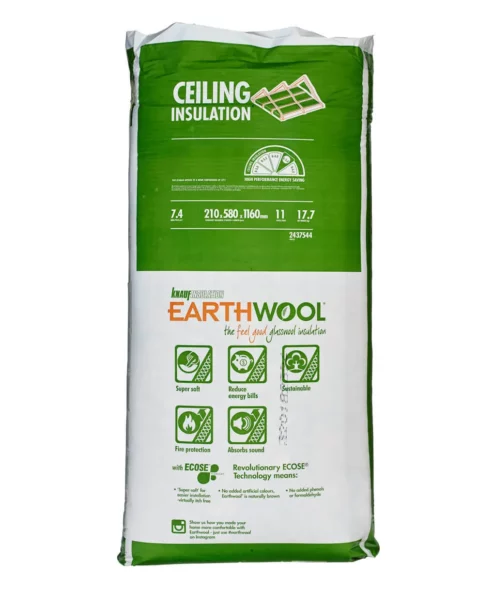
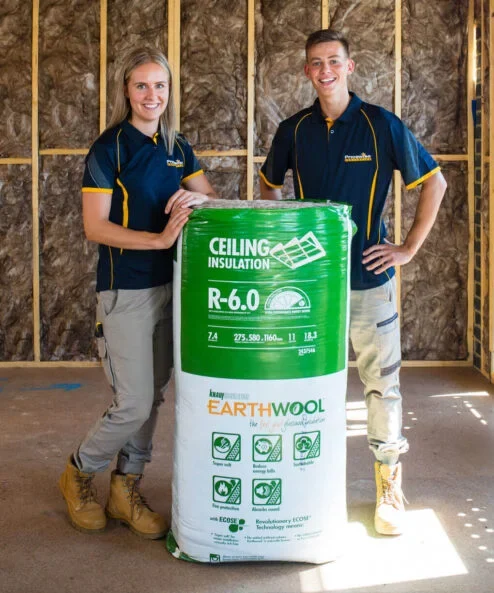
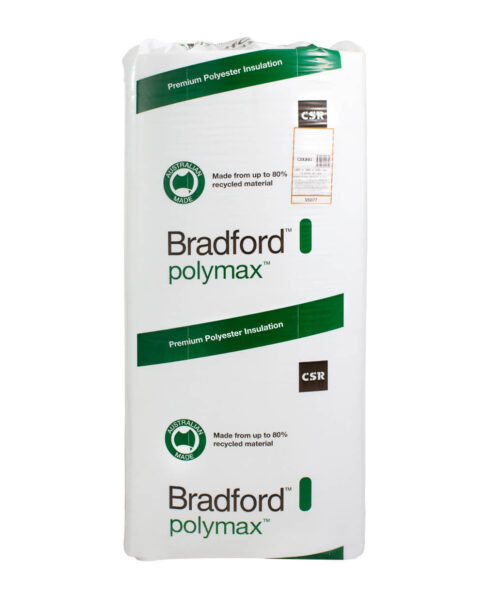
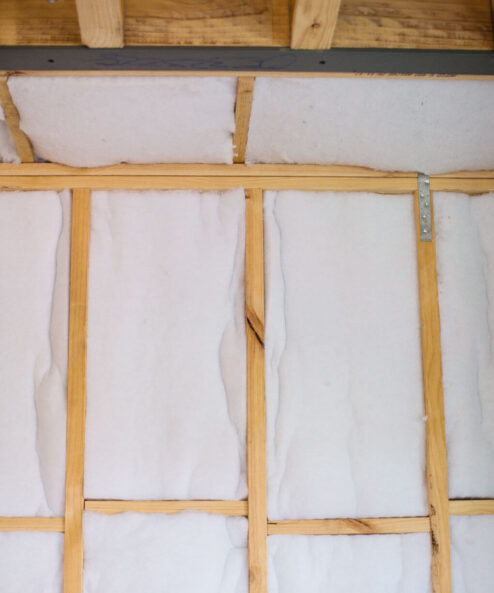
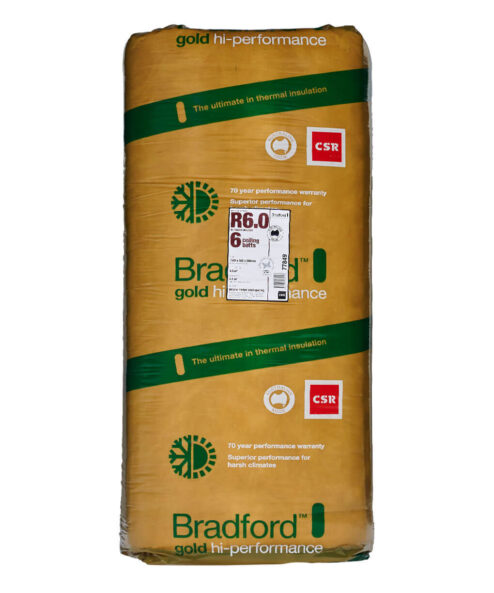
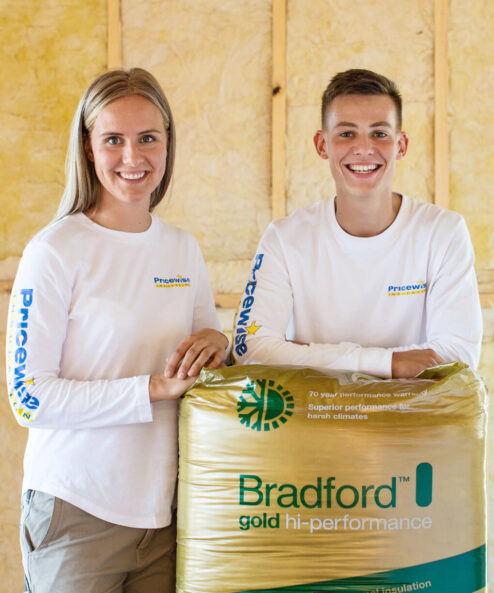
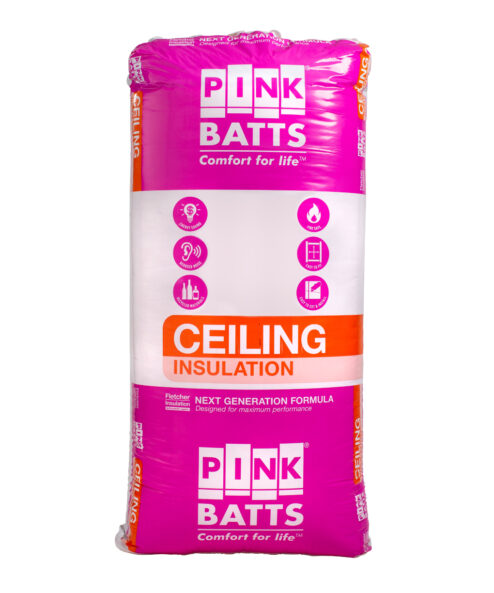
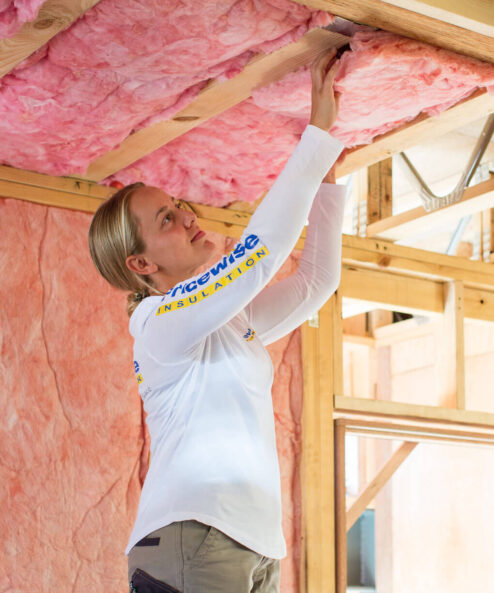
hi i am wanting to know if its worth putting scarfing along the rafters as well. inhale insulation bats. ultimately wanting to sheet up the roof space for storage and thought scarfing would be a good addition as its not too expensive.
This is very resourceful! Thank you for the tips!
You’re doing a fantastic work
Hi, we have 200m2 ceiling for cleaning and installation. We have our batts ready to go. Can you quote on both please.
Hi Jaco,
If you live in Victoria then we recommend that you get in touch with EcoHome Insulation on 0433 678 728. They specialise in insulation removal and installing new batts in an existing home.
Cheers,
Christa
Can you lay insulation across the top of ceiling joists if they don’t fit between the joists?
Hi Sam,
We recommend that you cut the insulation batts to fit between the timber joists. Glasswool insulation products such as Knauf Earthwool, Bradford Gold Batts and Fletcher Pink Batts are easy to cut with a retractable knife.
The only time that insulation is laid across the ceiling joists is when there is already insulation (such as blow-in insulation) between the joists. In this situation, the batts are laid in the opposite direction to the timber joists. You can watch our video about this here: https://www.youtube.com/watch?v=AQSkC4RJjhA (skip to 1:30). Feel free to give our team a call on 1300 729 639 if you have any further questions.
Cheers,
Christa
So we live in the tropics in a 1972 rebuild after Cyclone Althea, and there is no roof sarking under our aluminium roof. We are planning a new ceiling with insulation, but without removing the roof ( we have solar) , can you recommend a product to use under the battens between the rafters to act like sarking insulation?
Hi Cid,
Thanks for your question. You could install Kingspan Air-Cell Insuliner Insulation by stapling it to the underside of the timber joists. Feel free to contact us on 1300 729 639 if you have any further questions.
Cheers,
Christa
Do you put down the Air-Cell insulation, and then put Earthwood between the timber joints? I’ve got the same issue and wanting to really protect my house from the summer heat and winter cold.
Hi Faith,
If you’re looking to retrofit insulation in an existing house, I recommend stapling Kingspan Aircell Insuliner to the underside of your rafters, just below the roof tiles. This will help reflect the summer heat.
For added insulation, install Earthwool on top of your plasterboard ceiling. This will keep your home warmer in winter and help slow down heat gain during summer.
Let me know if you need further advice!
I live in a 2-stores apartment in Victoria. I need to soundproof my bedroom ceiling as I can hear footsteps n other appliances sound from above. What I am hearing is an impact noise. I wonder whether your company helps clients to undertake the job of soundproofing my bedroom ceiling. If your company doesn’t do that, can you kindly recommend someone to under the job and buy the materials from your company.
Regards,
Katherine
Many thanks!
Hi Katherine,
Thanks for your question. Your best option in terms of getting a trade to fix the problem would be to engage a plasterer. They will have to install resilient mounts and battens and they could then add the acoustic insulation batts and sound rated plasterboard.
Feel free to give our team a call on 1300 729 639 if you have any further questions.
Cheers,
Christa
The builders have left the insulation dangling from the ceiling of our renovated enclosed deck (waiting to put the ceiling plaster boards up), and left packs open and out of the bags in our garage/ laundry. Has been like that for going in 2 weeks (while they are waiting for the windows, so rain has got through into the deck in this time).
Should they have waited? Should we be worried about breathing it in rubbing up against it? Should we get them to take it down and replace it (could be wet from the rain)?
Hi Tyron,
Thank you for your comment. Ideally it would only be a few days between the insulation being installed and the plasterboard going up. Some insulation types such as glasswool can be irritating to the skin, however they generally aren’t harmful.
Glasswool insulation loses its form when it becomes wet, so this is one way to know if damage has occurred. In these instances, we recommend replacing the wet insulation with new batts. Feel free to give our team a call on 1300 729 639 if you have any further questions.
Cheers,
Christa
I have had a quote for batt insulation to be fitted and they have told me that insulating the eaves is not recommended as it allows the heat to escape from the ceiling space and will no add anything by being insulated. Do you think the same? It’s going to save me $$$ and short change them so I can’t see why they would be making this up.
Hi Selena,
The insulation contractor is correct. It’s important that you insulation goes over the top plate of your wall, but you won’t get any added benefit from insulating your eaves.
Kind regards,
Paul
Hi,
I am about to instal some ceiling installation in my older weatherboard house. The width between the joists are 460. My question is are there batts to fit this width I can purchase?
Hi Simon,
Thank you for your question. Standard insulation batts are made to be either 430mm or 580mm wide, so there isn’t a product that would fit your joists perfectly. However, glasswool insulation is easy to cut, so we would recommend purchasing 580mm wide insulation batts and cutting them to size. Please don’t hesitate to contact us on 1300 729 639 if you have any further questions.
Once you install the insulation, could be the ceiling or under and existing floor. Do you need to cover it up with something? If yes, what is most suitable?
Hi Max,
Thanks for your question. It is not necessary to cover the insulation once it has been installed. If you are concerned about moisture in your underfloor area, then we would recommend installing a polyester underfloor insulation product. Feel free to give our team a call on 1300 729 639 if you have any questions.
Kind regards,
Christa
Insulating a mid floor ceiling: should I push the batts up against the bottom of the upper floor, or keep them lower, even with the joists?
Hi Kevin,
Thanks for commenting!
If you are installing the batts to reduce sound, either will work fine. We generally recommend you install them level with your floor joists if it is between levels.
If you are installing acoustic insulation to your subfloor, we recommend installing them hard up against the floor, as insulation should be installed as close to the air-barrier as possible. This will miximise its thermal performance.
Feel free to give us a call on 1300 729 639 and we would be happy to assist you further.
Warm regards,
Felicity
The pre-loading tip is a great time-saver, and the reminder about using cut-offs to fill gaps ensures a comprehensive installation.
Following the point about maintaining even insulation height, I’m curious to know if there are any recommended tools for maintaining consistent depth, especially when working around obstacles like pipes or wires. Would a straightedge or a specific cutting tool be recommended?
Hi Joey,
Thanks for your comment!
When installing insulation around pipes and wires, you can split the insulation and place it on either side of the pipe or wire. If you’re insulating an older home, it’s a good idea to consult an electrician first to see if the wiring needs upgrading. Older, uninsulated wires can be more prone to overheating.
For cutting insulation, we recommend using a Stanley knife with a slide-out blade. Cutting against a piece of timber will give you a clean cut, and using a straight edge will help ensure your cuts are straight.
Hope that helps.
Hi – my small living room’s been getting rectangular shaped condensation on the ceiling in random areas during winter. I’ve lived here since 2005 but only noticed the problem last year as bright light has to be at a certain angle to show the sheen on the ceiling. The condensation dries in a couple of hours and only occurs once every couple of weeks when there’s a heavy dew. I was told it could be missing insulation batts. A month ago, tradies came out to install batts in the missing areas and adjust any batts that weren’t placed correctly. They were in the roof cavity for 15 minutes. Three weeks later the condensation has returned in exactly the same areas as the condensation was prior to the tradies coming here. I need someone to look again and am so nervous about the wrong person. Can you help me find someone?
Hi Debra,
Thanks for your Comment.
Does the condensation appear in straight lines along your ceiling? If you could send through any photos, we’d be happy to take a look. In some homes, condensation can form on the plaster where it’s fastened to the underside of the trusses. This happens because there’s no insulation above the trusses, making those sections of the ceiling colder than the rest. If this is the case, installing strips of insulation above the trusses might help. On days of high humidity, it’s also a good idea to keep the house above 16 degrees to prevent condensation from forming on walls and ceilings.
If you’d like to discuss this in more detail, feel free to give us a call on 1300 729 639, as there could be a few factors contributing to the condensation.
Hi I just bought an old 1958 timber house in the wheatbelt region of WA and just found out there’s no insulation in the roof cavity. I’m looking at laying new insulation myself but unsure about the back of the house that has a raked ceiling. I had a building inspection completed before buying but the lack of insulation wasn’t mentioned in the report.
Hi Courtney,
Since ceiling insulation wasn’t mandated until the late ’90s, many homes from that era don’t have it, which might explain why it didn’t show up in your building inspection. While it’s not considered a defect, adding ceiling insulation can make a big difference and is a great DIY project.
For your raked ceiling, there are a couple of options. Some people install insulation between the exposed rafters and then add new plasterboard underneath. If you have a metal roof, you could also consider removing the sheets to install roofing blanket underneath.
Hope that helps!